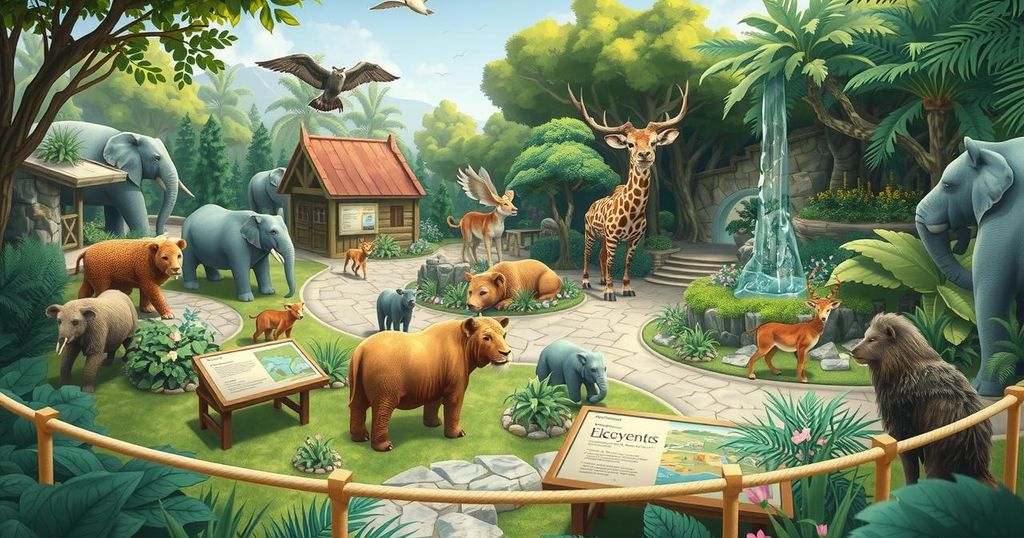China’s Zoos: A Shift from Entertainment to Education and Conservation
Chinese zoos are transitioning from entertainment to education, as exemplified by Hongshan Zoo in Nanjing, which prioritizes animal welfare and conservation over performances. By creating a more natural habitat and offering educational programs, Hongshan is inspiring behavioral changes and fostering public interest in conservation efforts. These shifts reflect growing awareness of animal rights and environmental issues in the country.
The transformation of zoos in China is moving from mere entertainment to a focus on education and environmental conservation. A notable example is the Hongshan Zoo in Nanjing, which endeavors to create a natural habitat for its animals, leading to a more immersive experience for visitors, albeit sometimes resulting in elusive animal sightings. The zoo’s innovative approach has garnered positive feedback, highlighting its shift towards animal welfare and educational initiatives.
As a self-funded public zoo, Hongshan relies heavily on ticket sales, covering approximately 85 percent of its expenses through admission fees. The zoo faced significant financial difficulties post-pandemic, yet a humorous remark by its director on social media brought renewed visitor interest. This transition away from traditional zoo experiences has emphasized education, replacing performance shows with informative displays and allowing animals more private spaces.
Hongshan Zoo has pioneered the abolition of animal performances, following government guidelines that aim to improve animal welfare. The shift in focus presents a deeper commitment to conservation efforts and addressing societal concerns regarding animal rights. Other zoos in major cities are gradually adopting similar ethics in their operations, enhancing both public awareness and animal living conditions.
Historically, many Chinese zoos were constructed for entertainment, offering substandard housing for animals. In contrast, the modern approach prioritizes the natural behavior of animals and integrates educational themes into exhibits. For instance, Hongshan opened a conservation zone showcasing local species, effectively using educational panels to connect visitors’ understanding of local ecosystems with wildlife conservation efforts.
Educational initiatives in Chinese zoos have evolved significantly since their inception in 2006. Through various forms of learning such as informational displays and themed events, zoos like Hongshan aim to foster a deeper connection between visitors and wildlife. The zoo’s innovative programming, including longer-term educational courses, is showing promise in inspiring the next generation of conservationists.
Recent feedback reflects the increasing interest in nature education and climate awareness among visitors, particularly young adults. Hongshan is responsive to this trend, expanding its educational offerings and sustainability initiatives, which include the use of solar technology and local resources. Although these efforts may seem modest, they contribute to a broader shift in values regarding animal protection and environmental stewardship. Education, as emphasized by zoo officials, aims not only to inform but also to inspire behavioral changes in the community at large.
In conclusion, the evolution of zoos in China, particularly the Hongshan Zoo, reflects a significant shift towards prioritizing education and animal welfare over traditional entertainment. The implementation of innovative practices fosters a deeper awareness of environmental issues and conservation among visitors. As public sentiment increasingly favors animal rights, the transition of zoos into centers for education supports meaningful behavioral change and sustainable practices, heralding a new era for wildlife conservation in China.
Original Source: www.eco-business.com








Post Comment